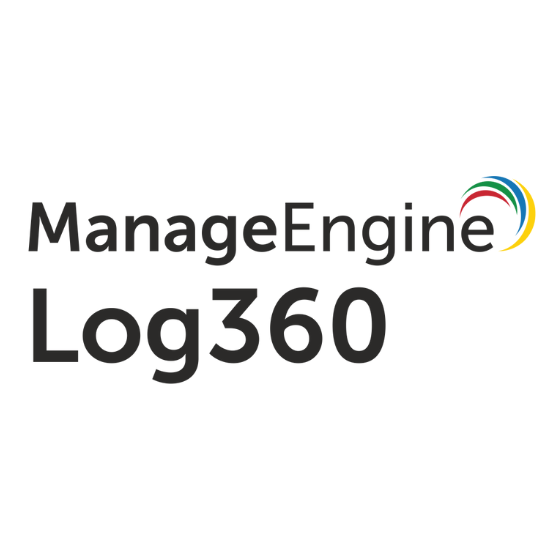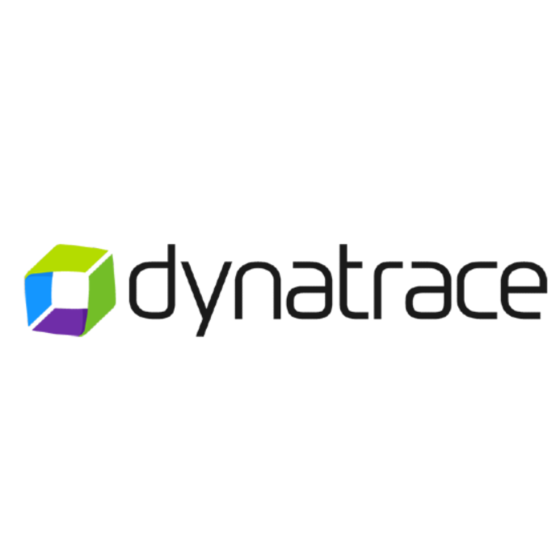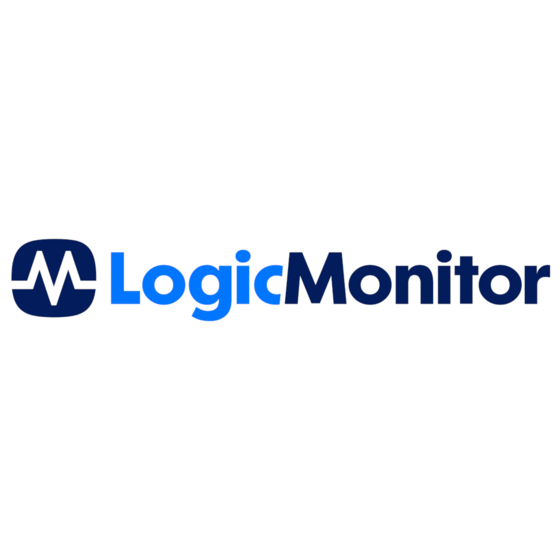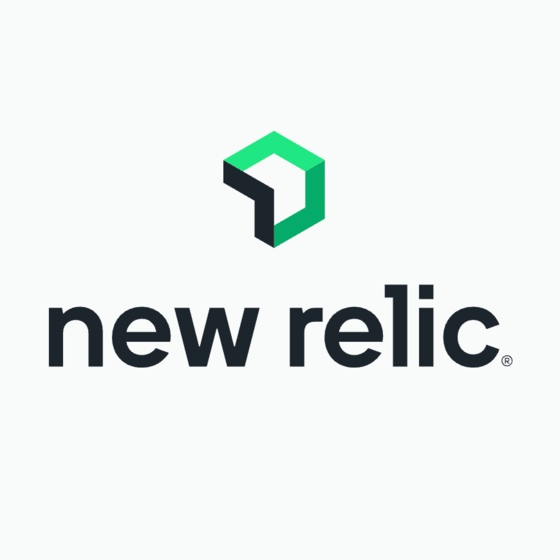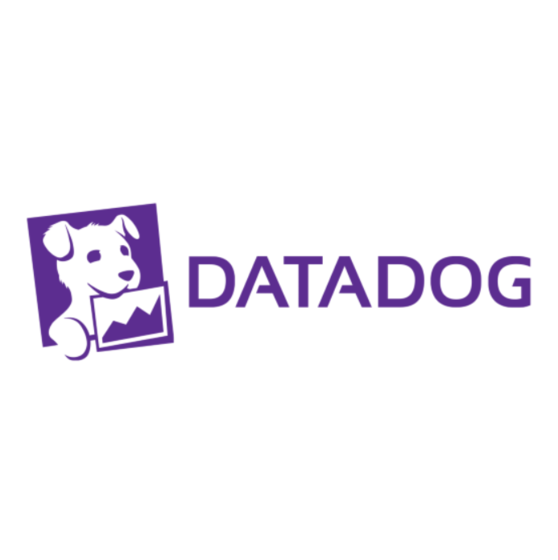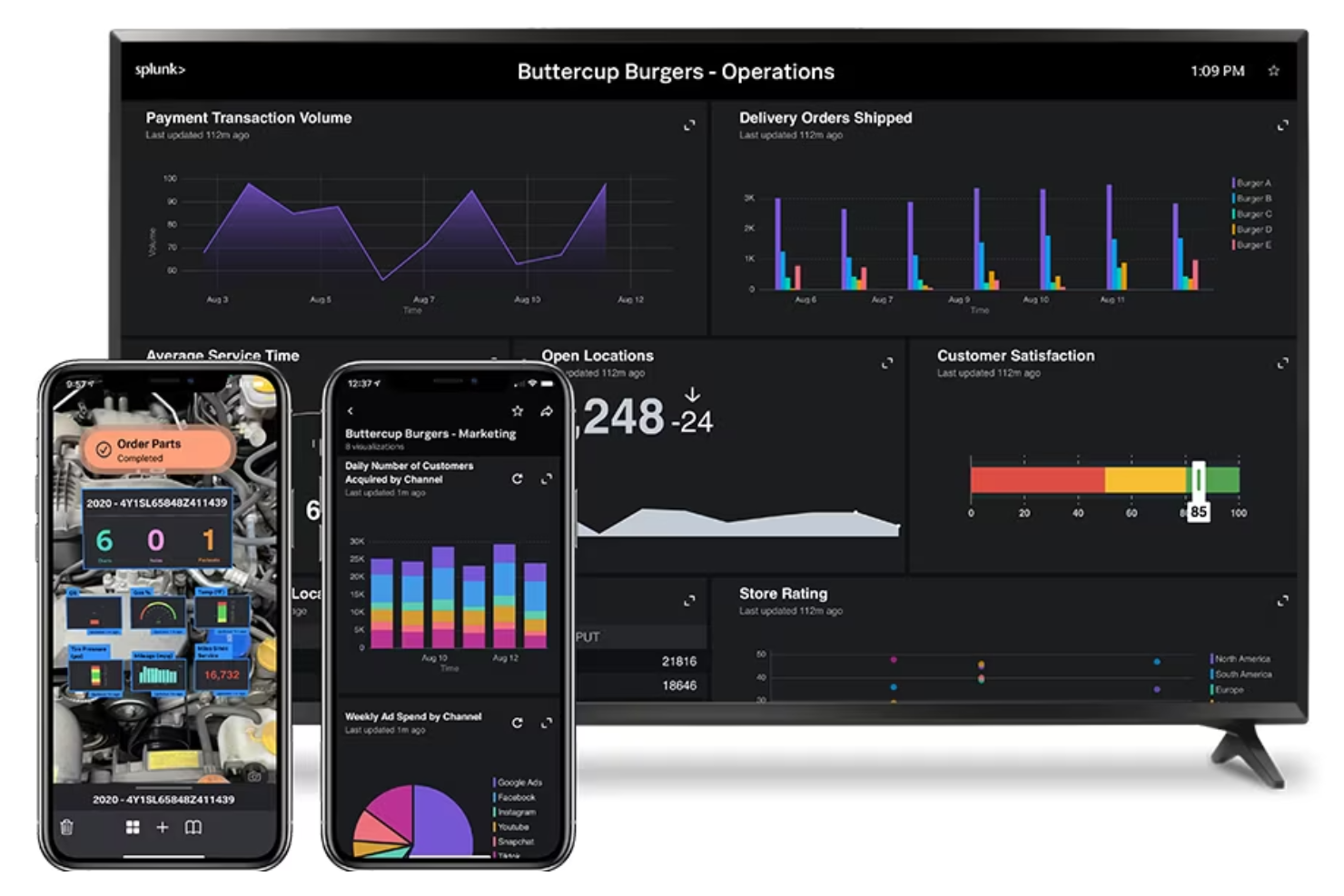10 Best Log Analysis Tools Shortlist
Here's my pick of the 10 best software from the 27 tools reviewed.
Our one-on-one guidance will help you find the perfect fit.
Navigating through log files, especially across operating systems like Windows and intricate firewalls, demands a solid log analyzer. These log analysis software tools turn system logs, server logs, and application logs, using indexing to ingest and streamline massive amounts of data. Features such as real-time alerts, predefined normalization techniques, and specialized plugins make log collection effortless.
Beyond acting as a simple event manager, a good log management solution offers graphs from metrics, ensuring logs, whether from a web server or elsewhere, are user-friendly. These tools are crucial for filtering log messages, offering invaluable insights, and ensuring easy communication in today's digital world.
What Is A Log Analysis Tool?
Log analysis tools are specialized software designed to analyze and interpret vast volumes of machine-generated log data. These tools aid in identifying patterns, troubleshooting system issues, and uncovering valuable insights from data sources like servers, applications, and network devices. Typically utilized by IT professionals, system administrators, and security experts, these tools are crucial in ensuring system uptime, improving performance, and safeguarding against potential security threats.
Best Log Analysis Tools Summary
| Tool | Best For | Trial Info | Price | ||
|---|---|---|---|---|---|
| 1 | Best for machine learning-based UEBA | Free demo available | Pricing upon request | Website | |
| 2 | Best for real-time log anomaly detection | 14-day free trial | From $15/user/month (billed annually) | Website | |
| 3 | Best for AI-driven application performance | 15-day free trial + demo available | From $0.0001 | Website | |
| 4 | Best for cloud-based infrastructure monitoring | Free trial available | From $3/resource/month | Website | |
| 5 | Best for developer-centric insights | Free plan + demo available | Pricing upon request | Website | |
| 6 | Best for integrated platform monitoring | 14-day free trial available | From $15/user/month | Website | |
| 7 | Best for continuous intelligence capabilities | 30-day free trial + free demo | From $15/user/month (billed annually) | Website | |
| 8 | Best for large-scale data analytics | Not available | From $67/user/month (billed annually) | Website | |
| 9 | Best for open-source log management | Free trial available + free demo | From $25/user/month (billed annually) | Website | |
| 10 | Best for end-to-end application insights | 14-day free trial | From $55/user/month (billed annually) | Website |
-

Docker
Visit WebsiteThis is an aggregated rating for this tool including ratings from Crozdesk users and ratings from other sites.4.6 -

Pulumi
Visit WebsiteThis is an aggregated rating for this tool including ratings from Crozdesk users and ratings from other sites.4.8 -

GitHub Actions
Visit Website
Best Log Analysis Tools Reviews
ManageEngine Log360 is a Security Information and Event Management (SIEM) solution that consolidates log analysis, threat detection, and compliance reporting into one unified platform. It’s designed for organizations that need both real-time security monitoring and robust compliance capabilities across diverse IT environments.
Why I Picked ManageEngine Log360:
I selected ManageEngine Log360 because of its broad integration of security, compliance, and user behavior analytics in one centralized tool. Unlike other solutions that specialize in a single aspect of log analysis, Log360 offers a balanced combination of threat detection, file integrity monitoring, and compliance reporting. Its machine learning-based UEBA (User and Entity Behaviour Analytics) sets it apart by proactively identifying anomalies that traditional rule-based systems might miss.
Standout Features and Integrations:
ManageEngine Log360 provides real-time security monitoring, Active Directory auditing, file integrity tracking, and security orchestration (SOAR). It features intuitive dashboards, global threat intelligence, and built-in DLP and CASB tools. It integrates seamlessly with other ManageEngine products and platforms like Veeam, Nginx, Cisco, and Fortinet.
Pros and cons
Pros:
- File integrity monitoring
- User-friendly dashboards
- Real-time security management
Cons:
- Complex initial setup
- Slower with large datasets
Coralogix offers a specialized log management platform, emphasizing the real-time detection of anomalies within vast logs. The tool ensures timely interventions by facilitating quick detection and identification of irregular patterns, aligning perfectly with its reputation for exceptional log anomaly detection.
Why I Picked Coralogix:
In my search for outstanding log management tools, I gravitated toward Coralogix because of its singular focus on real-time anomaly detection. By comparing and judging various tools, I formed the opinion that Coralogix stands out because it is not just about tracking logs but about understanding them in real time. This determination cemented my belief that it is the 'Best for real-time log anomaly detection.'
Standout features and integrations:
At the core of Coralogix's capabilities are features like ML-powered anomaly detection, instant visualizations, and alert mechanisms that ensure swift responses. Regarding integrations, Coralogix pairs well with platforms such as Kubernetes, AWS, and Slack, further enhancing its real-time response capabilities.
Pros and cons
Pros:
- Strong integration with popular platforms enhances real-time capabilities
- Rich visualization aids in the easy interpretation of logs
- Effective ML-powered anomaly detection
Cons:
- Detailed features might come with a learning curve
- Larger datasets may require more resources for processing
- The interface might appear complex for beginners
Dynatrace offers an advanced monitoring solution, leveraging AI to provide insights into application performance across varied environments. Its focus on AI-driven analytics ensures that businesses can anticipate, identify, and address performance issues with a precision that traditional tools might miss.
Why I Picked Dynatrace:
While selecting monitoring tools, Dynatrace caught my attention due to its distinct emphasis on artificial intelligence. Comparing it with other solutions, it became evident that Dynatrace offers a unique approach to application performance management, utilizing AI for deeper, proactive insights. I judged it as the 'Best for AI-driven application performance.'
Standout features and integrations:
Key features of Dynatrace include real-time AI analytics, automatic root cause determination, and full-stack monitoring, making it a holistic solution for complex applications. Regarding integrations, Dynatrace effectively connects with platforms such as AWS, Azure, and Google Cloud, enabling businesses to monitor applications across diverse cloud environments.
Pros and cons
Pros:
- Efficient root cause determination accelerates issue resolution
- Full-stack monitoring covers all facets of applications
- AI-driven analytics provide proactive insights
Cons:
- Some advanced features come with a steep learning curve
- Pricing can be a barrier for smaller organizations
- Initial setup might require expert guidance
LogicMonitor stands out as a comprehensive SaaS-based performance monitoring platform. Designed for the modern IT environment, this tool deepens into cloud, hybrid, and on-premises infrastructures, delivering detailed insights and timely alerts.
Why I Picked LogicMonitor:
Pinpointing a tool that covers the full breadth of IT infrastructures required careful determination. LogicMonitor consistently rose to the top of my list when comparing various platforms due to its specialized focus on cloud infrastructures. Given the growing reliance on cloud solutions, I'm convinced that LogicMonitor is rightfully 'Best for cloud-based infrastructure monitoring.'
Standout features and integrations:
Key features of LogicMonitor include automatic device discovery, which eases the setup process, and forecasting analytics, providing projections based on past data. On the integrations front, LogicMonitor offers connections with popular platforms such as ServiceNow, Slack, and Puppet, streamlining the information flow and enhancing collaboration within IT teams.
Pros and cons
Pros:
- Rich library of integrations with leading IT tools
- Robust automatic discovery and forecasting tools
- Comprehensive coverage of cloud, hybrid, and on-premises infrastructures
Cons:
- Requires initial configuration for tailored monitoring
- Pricing structure can be confusing for some users
- The interface may seem complex for beginners
New Relic has established itself as an industry-leading application performance management platform, focusing on giving teams insights into their software's performance and behavior.
Why I Picked New Relic:
New Relic was an undeniable choice when selecting a tool that offers insights tailored to developers. It distinguished itself with its developer-focused telemetry data and the granularity of its insights. How it provides developers with the necessary tools and data, equipping them to make informed decisions, solidified my opinion that it's genuinely 'Best for developer-centric insights.'
Standout features and integrations:
Real-time application monitoring is at the heart of New Relic's offerings, providing a clear view of how applications behave and perform. Furthermore, the platform boasts features such as distributed tracing and error tracking, ensuring developers can pinpoint issues precisely. Integrations-wise, New Relic connects well with platforms like AWS, Azure, and Google Cloud, along with collaboration tools such as Slack and Jira.
Pros and cons
Pros:
- Developer-focused features facilitate precise troubleshooting
- Comprehensive integrations with cloud platforms and team collaboration tools
- Real-time monitoring provides up-to-the-minute insights
Cons:
- Pricing can be prohibitive for smaller teams
- Custom instrumentation can be complex
- Might present a learning curve for newcomers
Datadog is a comprehensive monitoring service that gathers information from various sources, synthesizing it for clear observation and action. Datadog provides detailed insights across full-stack observability, from infrastructure to applications.
Why I Picked Datadog:
I choose Datadog for its holistic approach to monitoring. Among the plethora of tools I reviewed, Datadog had a distinct appeal due to its expansive capabilities. Furthermore, when considering the pivotal need for an integrated monitoring platform, Datadog fits the bill perfectly, emphasizing harmonizing varied metrics under one unified platform.
Standout features and integrations:
Datadog unifies infrastructure metrics, traces, and logs, with Anomaly Detection to spot irregularities. It integrates with various cloud providers, databases, and tools like Slack and Microsoft Teams, making it adaptable for any business environment.
Pros and cons
Pros:
- Advanced anomaly detection
- Full-stack observability
- Extensive integration capabilities
Cons:
- Some users report occasional latency in alerts
- Limited customization for dashboards
- Steeper learning curve for beginners
Sumo Logic is a cloud-based platform for data analytics. It provides insights to help teams be proactive and responsive in dynamic digital environments. It's recognized as 'Best for continuous intelligence.'
Why I Picked Sumo Logic:
When selecting a tool with unparalleled continuous intelligence prowess, Sumo Logic was a clear frontrunner. Its unique approach to analytics, combined with its dedication to real-time insights, makes it stand out in a crowded field. I believe Sumo Logic epitomizes what 'Best for continuous intelligence capabilities' should offer, with its ability to give teams the necessary tools to navigate an ever-evolving digital landscape.
Standout features and integrations:
Central to Sumo Logic's offering is its real-time dashboards that ensure teams have an up-to-date view of their data landscape. Its log management and cloud SIEM features also empower organizations to maintain robust security postures. Regarding integrations, Sumo Logic connects with platforms like AWS, Kubernetes, and Terraform, along with various incident management tools.
Pros and cons
Pros:
- Cloud-native architecture ensures scalability and flexibility
- Comprehensive integration with cloud platforms and incident management tools
- Real-time dashboards offer a constant view of data dynamics
Cons:
- Query language requires a learning curve for those new to the platform
- Some users may desire more granular control over data parsing
- Can be overwhelming for users unfamiliar with advanced analytics
Splunk Enterprises dominates as a platform that allows organizations to delve into big data from many sources, converting it into actionable insights. Its prowess in turning voluminous data into comprehensible analytics makes it a top choice for entities looking to harness the potential of large-scale data analytics.
Why I Picked Splunk Enterprises:
In my journey of selecting the right data analytics tools, Splunk Enterprises caught my attention. What differentiates Splunk is its ability to rapidly process and derive meaning from extensive data streams. This led me to conclude that it is the 'Best for large-scale data analytics.'
Standout features and integrations:
Splunk's features cater to extensive data needs: from real-time processing to advanced data visualization, it ensures data is accessible and interpretable. As for integrations, Splunk easily pairs with platforms such as AWS, Cisco, and Microsoft, further enriching its data analytics capacity.
Pros and cons
Pros:
- Wide array of integrations with major platforms
- Offers a versatile range of visualization tools
- Capable of handling and processing vast amounts of data efficiently
Cons:
- Requires a significant amount of infrastructure for optimum functionality
- Licensing can become expensive as data volumes increase
- Might be overwhelming for new users due to its depth of features
Logz.io offers a powerful platform primarily rooted in the ELK Stack (Elasticsearch, Logstash, and Kibana) - a trio of tools crucial in log analytics. Logz.io stands out for its dedication to open-source practices, making it an excellent option for teams and organizations.
Why I Picked Logz.io:
Selecting the right tools involves meticulous comparison and judgment, especially in the vast realm of log analysis. My choice for Logz.io hinged on its unique stance on open-source log management. I believe that embracing open-source principles isn't just a strategy; it's a philosophy that paves the way for continuous improvement and collaboration. Given this, it's evident why Logz.io stands as the 'Best for open-source log management.'
Standout features and integrations:
Logz.io excels with features like cognitive insights, which employs machine learning to identify critical log events and an observability platform that offers a holistic view of your stack. Integrations are also a strong suit, with Logz.io smoothly aligning with platforms like Slack, BigPanda, and CloudWatch, ensuring efficient alerting and data flow across different tools.
Pros and cons
Pros:
- Vast array of integrations with popular platforms
- Cognitive insights leverage machine learning to log events
- Strong commitment to open-source methodologies
Cons:
- The interface requires a bit of a learning curve for those unfamiliar with the ELK Stack
- Costs can accumulate with increased log volumes
- Some features might be advanced for small-scale users
IBM Instana specializes in comprehensive application performance management, designed to cater to dynamic containerized microservice applications. Its proficiency in delivering unparalleled end-to-end insights into application performance solidifies its position as a prime tool for application insights.
Why I Picked IBM Instana:
While choosing tools for in-depth application insights, IBM Instana emerged as an unmistakable leader. The tool's unique capability to give thorough insights from start to finish in an application's journey affirms my belief that it is 'Best for end-to-end application insights.'
Standout features and integrations:
IBM Instana offers automatic discovery and monitoring, ensuring no application landscape segment goes unnoticed. It incorporates a cutting-edge AI-powered analysis component, ensuring quick issue detection. On the integrations front, Instana easily combines with tools like Jenkins, Kubernetes, and Docker, to name a few, fostering richer application insight extraction.
Pros and cons
Pros:
- Comprehensive integrations with key tools and platforms
- Advanced AI component aids in rapid issue identification
- Automatic discovery ensures complete application coverage
Cons:
- High-end features might be overkill for smaller applications
- Requires consistent tuning for specific environments
- The platform can be intricate for beginners
Other Log Analysis Tools
Below is a list of additional log analysis tools that I shortlisted but did not make it to the top 10. Definitely worth checking them out.
- LogPoint
For threat intelligence integration
- Mezmo Log Analysis
For customizable log data visualization
- Site24x7
For comprehensive website monitoring
- Sematext Cloud
Good for performance monitoring and logs management
- Checkmk
Good for comprehensive IT monitoring
- ManageEngine ADAudit Plus
Good for Active Directory auditing
- SolarWinds Kiwi Syslog Server
Good for centralized syslog management
- Oracle Log Analytics Cloud Services
Good for Oracle-based log analysis
- DataSet (by SentinelOne)
Good for data-driven threat hunting
- EventSentry
Good for real-time event log tracking
- Panther
Good for automated threat detection
- BetterStack
Good for streamlining developer operations
- Elastic Stack
Good for real-time search and analytics
- Oracle Cloud Infrastructure Logging
Good for robust Oracle ecosystem support
- VMware Aria Operations for Logs
Good for VMware environment monitoring
- CYREBRO
Good for centralized cybersecurity visibility
- Google Cloud Logging
Good for deep integration with GCP services
Selection Criteria For Choosing Log Analysis Tools
I've evaluated dozens of log management tools, but in this case, I was really focused on ease of use combined with advanced analytics capabilities, which I'll dive deeper into below.
Core Functionality
- Real-time Monitoring: Enables users to view and respond to events in real time.
- Log Aggregation: Collects log data from multiple sources into a unified dashboard.
- Alerts and Notifications: Informs users when specific events or anomalies are detected.
- Log Retention and Archiving: Stores logs for compliance and historical analysis.
- Search and Query Capabilities: Allows users to easily sift through vast amounts of log data.
Key Features
- Advanced Analytics: Beyond basic search, tools should provide deeper insights into log data, understanding patterns, trends, and correlations.
- Security Features: Given the sensitive nature of logs, encryption, access controls, and threat detection capabilities are crucial.
- Compliance Management: Many industries require logs to be stored and managed in specific ways for compliance; the right software aids in meeting these regulations.
- Scalability: As companies grow, their log data will too. The software should handle increased loads without significant drops in performance.
- Integration Capabilities: It's essential for the software to integrate with existing IT infrastructure and third-party applications.
Usability
- Intuitive Dashboards: Dashboards that present data clearly and offer customizable views are invaluable for log management tools. This helps users quickly identify and respond to issues.
- Filtering and Tagging: Given the volume of log data, tools should provide efficient ways to categorize, filter, and tag logs for more straightforward analysis.
- Role-Based Access: This ensures that users see only the log data relevant to them, keeping sensitive information secure and simplifying the user experience.
- Comprehensive Documentation: Log management can be intricate. The tool should come with a well-organized and easily accessible knowledge base or learning library.
- Responsive Customer Support: Especially for enterprise solutions, timely and helpful support is paramount when issues arise.
Most Common Questions Regarding Log Analysis Tools (FAQs)
What are the benefits of using log analysis tools?
- Improved Security: Log analysis tools help identify and respond to security threats in real-time by monitoring unusual patterns or activities.
- Improved Troubleshooting: They assist in quickly identifying the root cause of system or application issues by analyzing logs.
- Regulatory Compliance: Many industries require logs for compliance purposes. These tools help store, manage, and retrieve logs in line with regulatory standards.
- Operational Efficiency: Through real-time log monitoring software and alerts, teams can address issues promptly, reducing downtimes and ensuring optimal system performance.
- Informed Decision Making: By understanding logs, businesses gain insights into user behaviors, system performance, and potential areas of improvement.
How much do log analysis tools typically cost?
The pricing for log analysis tools varies based on features, scalability, and the intended audience (small businesses vs. enterprise-level organizations). Some tools offer freemium models, where basic features are available for free, and advanced features come at a cost. Others may charge based on the volume of log data or the number of sources from which logs are collected.
What are the typical pricing models for these tools?
- Per-User Pricing: Charges are based on the number of users accessing the tool.
- Volume-Based Pricing: Costs depend on the amount of log data processed or stored.
- Freemium Model: Basic features are available for free, with advanced features or additional storage capacity available for a fee.
- Flat-Rate Pricing: A set price for unlimited use of the tool, irrespective of users or data volume.
What's the typical price range for log analysis tools?
Prices can range anywhere from $10/user/month for basic solutions to upwards of $1,000/user/month for enterprise-grade tools with advanced analytics and security features.
Which are the cheapest and most expensive log analysis tools?
While exact prices can vary based on current offers and specific configurations, tools like “SolarWinds Kiwi Syslog Server” and “ManageEngine Log360” tend to be more affordable. In contrast, solutions like “Oracle Log Analytics Cloud Services” and “DataSet (by SentinelOne)” typically come at a premium due to their comprehensive feature sets and scalability options.
Are there any free log analysis tools available?
Yes, several tools offer free versions or open-source alternatives. “Elastic Stack” provides a free tier, and there are other open-source solutions like “Logstash” and “Graylog” that offer robust log analysis capabilities without any initial cost. However, free versions might have limitations in terms of features, data volume, or scalability.
Other Log Analysis Tool-Related Reviews
Summary
Log analysis tools significantly enhance security, streamline operations, and offer insights into system behaviors and user activities. The landscape of these tools is vast, with various solutions tailored for different needs, from basic log monitoring to advanced analytical capabilities. It's essential to prioritize what's crucial for your specific use case, whether it's real-time threat detection, regulatory compliance, or understanding user behaviors.
Key takeaways:
- Define Your Needs: Understand the primary purpose behind your quest for a log analysis tool. Are you looking to bolster security, comply with industry regulations, or derive operational insights? Your needs will guide your choice.
- Consider Usability: A tool's effectiveness isn't just in its features but also in its usability. Prioritize tools that align with your team's technical proficiency and offer interfaces or functionalities that simplify the log analysis process.
- Understand Pricing Models: With varied pricing models available, from per-user to volume-based, ensure you select a tool that offers the best value for your investment. Don't overlook potential additional costs like setup fees or costs associated with scaling up.
What Do You Think?
As I constantly strive to provide the most comprehensive and up-to-date list of log analysis tools, your insights, and experiences can be invaluable. If there's a tool you believe deserves mention, or if you've had an exceptional experience with one not listed, please let me know. Your input could guide others in making a more informed decision.


